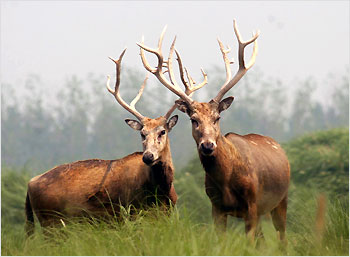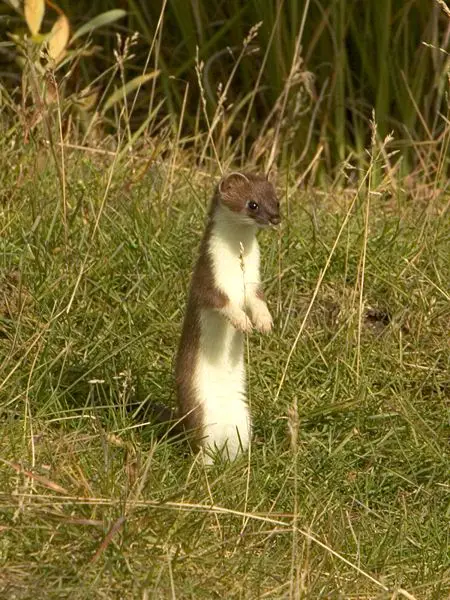European Polecat
The European Polecat is a solitary night hunter. These animals are close relatives to skunks, and both can excrete an incredibly unpleasant scent from special glands, almost completely paralyzing the respiratory system of the enemy. The European Polecat inhabits territories in Europe, from the Ural Mountains in East to Spain in West.
These mammals have elongated, flattened bodies, short legs and a fluffy tail. Their height reaches only 4-6 cm, while they’re usually more than 40 cm long. The weight of the Polecats varies from 500 to 1500 grams, and what’s interesting, that the males are usually one and a half times heavier. This way, the two sexes hunt on different sized animals, thus not having to compete with each other. The fur of these animals is usually dark brown or black, with a clearly visible lighter underfur. A distinguishable characteristic of the Polecats is the “mask” made up of several white spots on the face.
European Polecats usually stay in humid areas – forests, riversides and others. They’re also territorial, which means that each specimen takes up a territory in which the animal hunts, rests and copulates. Males usually have a territory of about 2500 hectares, while the females’ territories are much smaller and often intersect. The territory is marked with a special scent, and in case of a fight, this excrete is also used as a kind of a chemical weapon.
Although not large in size, the Polecat is actually a very capable hunter. Mice, rats, rabbits, birds, frogs, lizards, snakes and other creatures easily become prey to the European Polecat. Huntsmen don’t like this animal, because many birds get killed by it, while foresters disagree, saying that Polecats hunt out pest rodents. Whatever the case, it’s sure that the Polecat can and will hunt any creature of the appropriate size.
The mating period for European Polecats falls in February and March. There is no specific rut, and the copulation is rather quick. The female then builds a closed den of grass and moss, in which after 40-43 days, five to ten blind and helpless pups are born. The young Polecats are fed milk for one month, after which they start going out of the den and learning to hunt. Three months after birth they’re already completely independent. The total life expectancy of these animals reaches 5-6 years.
In the past, Polecat hunting was considered a fine entertainment. Nowadays, however, due to the destruction of their natural habitat, the population of European Polecats has decreased and thus hunting them is often prohibited. Hunting for fur has also taken its toll on the population of these animals, and even in the 1970’s, the Polecat’s fur was very valuable. Even though both hunting for fun and for fur has stopped, this species is still at risk as many of their inhabited territories are being transformed into farmlands and living areas.




